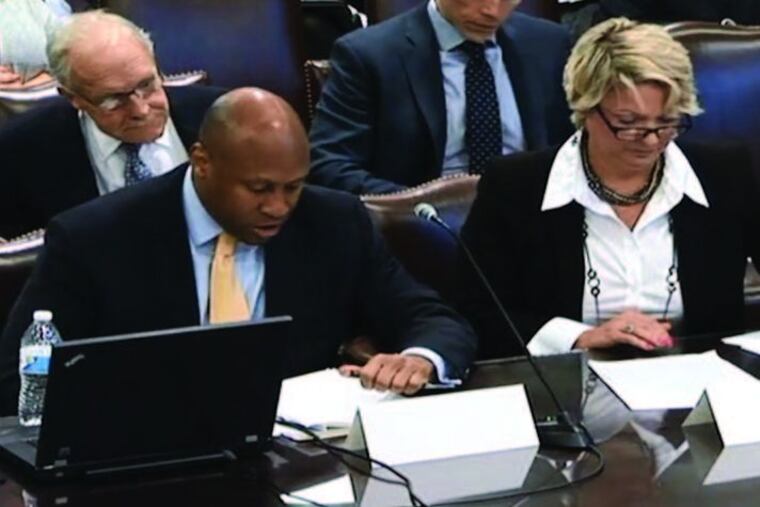Public pension funds continue to face challenges | Opinion
Shady private equity isn't draining our pensions.

H.L. Mencken, the late journalist and critic of American culture and politics, once noted: "For every complex problem, there's a solution that is simple, neat, and wrong."
Followers of the ongoing debate over public pension funding might take that observation to heart.
Some recent commentaries imply that curtailing private equity investments is the crucial factor in saving Pennsylvania's pension funds.
If only it were that easy.
In reality, calculating a viable path to ensuring the health and integrity of our pension funds is like solving a complex algebraic equation. There are many interconnected factors, values, and variables to be considered, calculated, and compared. Some loom larger than others. Some are more constant. Some can change rapidly in short periods of time, depending on what's happening in the overall economy.
We take our responsibilities as legal and fiduciary protectors of our members' retirement funds very seriously. That's why it's so important to take the long view in regard to investment policies. For us, it's a familiar path.
Over the past 25 years, SERS — the Pennsylvania State Employees' Retirement System — earned more than $50 billion and paid $48 billion in retirement benefits. During this period, the SERS board of trustees and investment professionals made difficult investment decisions in the best interest of its members through multiple market environments, cycles of suppressed employer contributions, legislative changes, and challenging political headwinds.
Much of our ability to withstand economic tribulations derives from asset allocations to private equity. Ironically, that's also the source for much of the confusion in recent news stories and editorials.
Much of the confusion involves the commonly-used industry term "carried interest." Some call carried interest an unreported fee; however, many others in the industry state that carried interest isn't a fee; it's a profit-sharing structure.
The characterization and reporting of carried interest by public pension funds is an issue being analyzed throughout the industry. Despite recent headlines, nothing shady is happening.
Here's how carried interest works. In exchange for providing investment capital, the limited partner (SERS) gets the majority (typically 80 percent) of the partnership profits. The general partner — for example, a private investment firm — receives its share (typically 20 percent of net profits), but only after reimbursing the limited partner for all prior management fees and expenses, and capital contributed. That 20 percent is "carried interest."
While 20 percent of a successful investment can seem significant, this structure helps to align interests between the general partner and the limited partner. When one succeeds, the other succeeds. Typically, for every dollar of profit the general partner receives, the limited partner receives four. That noted, if there are ways to reduce the amount of carried interest without reducing returns or adding unnecessary risk to the fund, we're listening.
Public pension funds continue to face many challenges, chronic underfunding and administrative tinkering by budget policymakers being among them.
A recent Pennsylvania Pension Review Commission hearing (part of 2017's Act 5 pension-reform legislation) gave us the opportunity to present practical suggestions to bolster our state's public pension funds for the long-term.
We offered a number of positive, workable suggestions to ensure the ongoing health and integrity of the system. These included suggesting ways for the governor and General Assembly to help us streamline administrative functions and increase capabilities to let us continue with the cost-saving improvements already underway, and to add specialized staff in the investment and investment accounting areas to help us improve our investment and financial operations and audit capabilities. Most importantly, we requested that they consider enacting a state constitutional amendment guaranteeing payment of the amount required to fund all benefits using actuarially sound principles (as has been done for the past three years) and to further establish a dedicated funding source for those payments, similar to what other states have done.
We look forward to working with the governor and legislature to review and discuss whatever suggestions the Pension Fund Review Commission and its consultants present.
Terrill J. Sanchez is executive director of the State Employees' Retirement System.